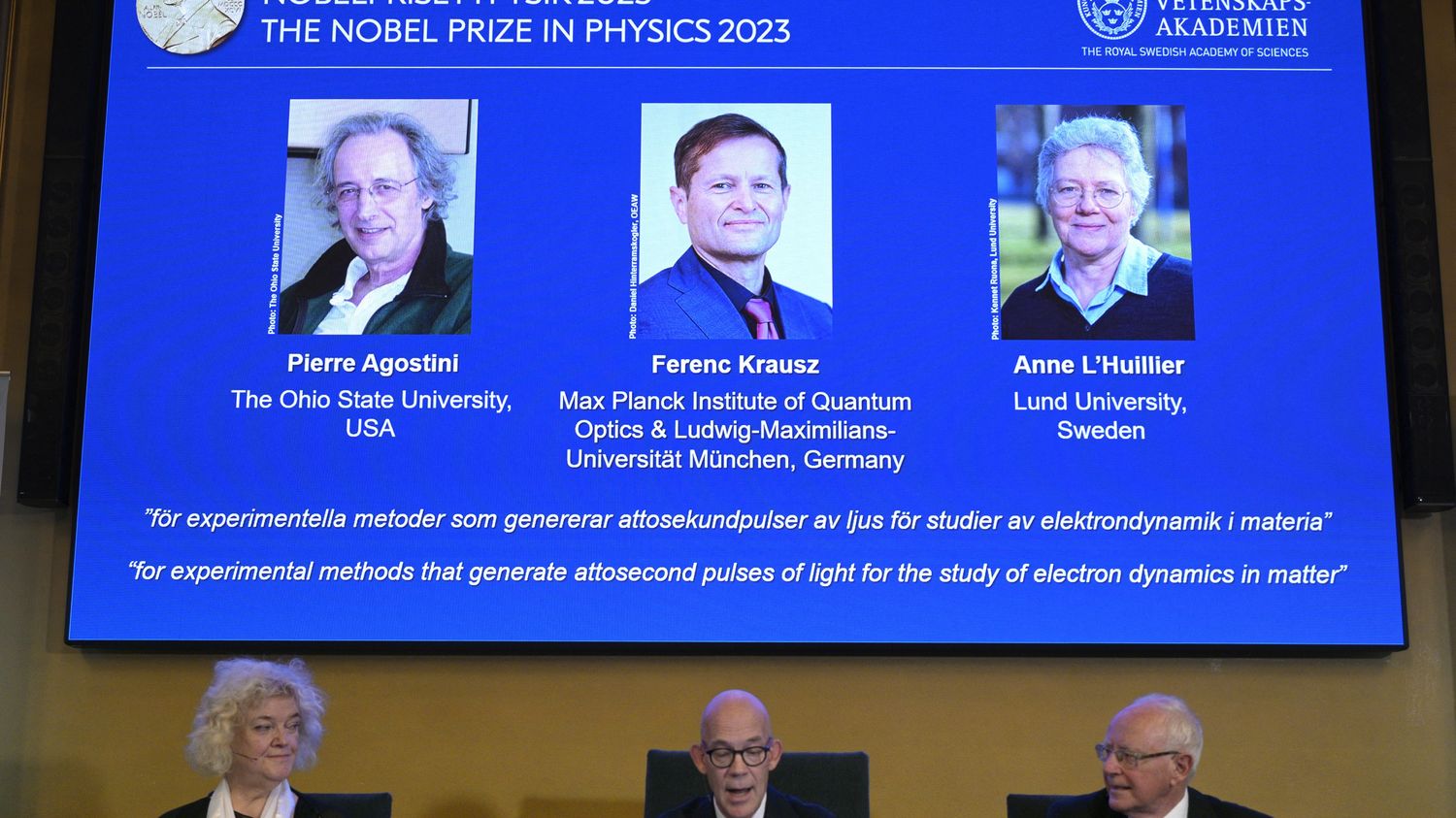Pierre Agostini and Anne Lhuillier on Wednesday became the 16th and 17th French people to receive the Nobel Prize in Physics. The winners succeeded in creating pulses of light on the order of an attosecond, a billionth of a billionth of a second.
The year of physics in France is off to a good start. The Nobel Committee honored Wednesday, October 3, the French, Anne L’huillier and Pierre Agostini, as well as the Austro-Hungarian Ferenc Krausz for their work on the movement of electrons. To be able to observe the ultra-rapid movements of electrons, we must be able to place ourselves on the scale of attoseconds, which corresponds to a billionth of a billionth of a second.
>> Quizzes. Nobel Prize: are you knowledgeable about the winners and their exploits?
It is a very short time, to measure it, you must know that there are as many differences between a second and an attosecond as between the age of the universe and the duration of a heartbeat. . This shows the prowess of placing oneself on this scale of time. These three Nobel laureates actually helped to develop a kind of ultra-fast camera that makes it possible to observe electrons moving on this time scale.
Ultra-brief pulses of light
To summarize, deciphers Fabrice Catoire, research fellow at the CNRS in Bordeaux, we know that to take a clear photo, the flash of light must be faster than the moving object. These researchers created ultra-brief pulses of light, highly controlled flashes that provide sharp images of moving electrons.
For the moment, this fundamental research provides us with information on the properties of matter and their evolution over time. But this work opens up enormous prospects for concrete applications in the next 50 years. Manufacturing of semiconductors, new generations of batteries, improvement of solar panels, are all possible applications. This could also make it possible to modify the properties of certain coatings, making them more insulating, more conductive or magnetic. Finally there is also the promise of improving medical diagnostics, by identifying earlier certain molecules which signal the development of a disease.
>> The Nobel Prize in Physics can “arouse curiosity” in young people and “draw them into the stream of science”, believes Serge Haroche, 2012 Nobel Prize winner
Pierre Agostini and Anne Lhuillier are the 16th and 17th French people to receive the Nobel Prize in Physics, following in particular Alain Aspect last year. There is a French advantage in this area, particularly in the field of light and optics, confirms Franck Lépine, CNRS Research Director at the Light Matter Institute in Lyon. This attosecond physics is booming in France.“We never say enough to what extent, beyond fundamental knowledge, concludes the scientist, this research in physics aims to provide very concrete solutions in different areas of everyday life.”
